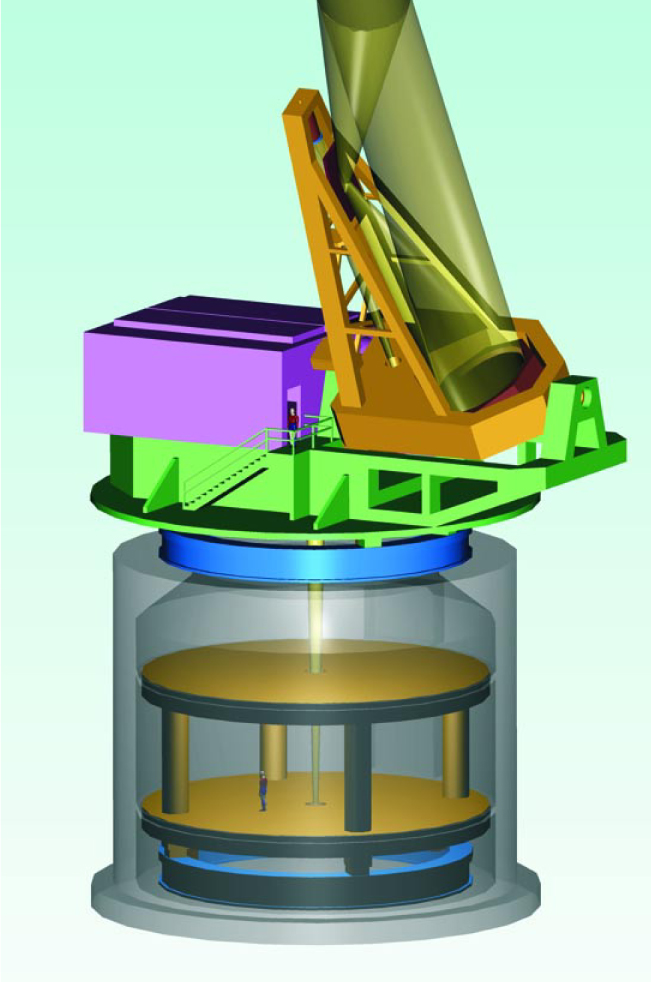NSO Plans Large Telescope, Splits from Nighttime Astronomy
DOI: 10.1063/1.1522206
As it gears up to build a jumbo solar telescope, the US National Solar Observatory is reclaiming independence from the National Optical Astronomy Observatory.
Along with other mostly 20-year-old observatories, NSO was folded into the newly formed NOAO in the mid-1980s. The idea was to share resources and foster synergies among scientists from the daytime and nighttime astronomy communities. The experiment did not work out as well it could have, says John Huchra, who chairs the board of directors of the Association of Universities for Research in Astronomy, the organization that manages both observatories for NSF. “The nighttime and solar astronomers don’t have goals that are quite enough in common.” (AURA’s longstanding contract was renewed in May, after being opened to competition for the first time.) NSO’s share of the total NOAO budget hovered around 25–30% and, says NSO Director Stephen Keil, “the solar physics community felt that independence would give it the opportunity to pursue projects more efficiently, both in terms of implementation and funding.”
A gradual split was begun in late 2000, driven by NSO’s desire to have full control over the Advanced Technology Solar Telescope (ATST), the most ambitious project in ground-based solar astronomy in decades. NSO and NOAO still share space and staff in Tucson and Kitt Peak, Arizona, but they are programmatically and, increasingly, financially independent. The separation is expected to be completed in a few years, when construction of the ATST gets under way. By then, a single new site for NSO headquarters should have been chosen to replace NSO’s current offices, which are spread between Tucson and Sacramento Peak, New Mexico.
The grand goals of the ATST are to seek answers to broad and basic questions. How are cosmic magnetic fields generated and destroyed? What role do cosmic magnetic fields play in the organization of plasma structures? What causes solar variability? Says Keil, “What [the ATST] will do for solar physics is open up a whole new regime of physical scales to explore.”
Still in the design stage, the ATST is to have a 4-meter aperture, far larger than any existing solar telescope, and be outfitted with adaptive optics to correct for atmospheric disturbances. It will have a spatial resolution of 0.05 arcseconds—fine enough to see the Sun’s magnetic features down to about 35 km in length, the scale of flux tubes predicted by theory but not yet observed. The telescope’s large aperture will also collect enough light to temporally resolve explosive flares and other short-duration solar activity. To exploit both the resolution of visible wavelengths and the keen magnetic sensitivity of the infrared, the ATST’s wavelength range will be 0.3 to 35 microns.
Six sites are being considered for the ATST. Four are in the US: on Sacramento Peak; Big Bear Lake, California; Haleakala, on the Hawaiian island of Maui; and Panguitch Lake in southern Utah. The other two are in northern Mexico’s San Pedro Mártir mountains and on the Spanish island of La Palma. At each site, air turbulence, cloud cover, dust, and humidity will be monitored for at least a year before a decision is made.
In addition to good observing conditions, where the ATST goes could be influenced by logistical, political, and financial factors. NSO is seeking partners to cover about half the telescope’s estimated $70 million price tag, and those partners will have a say. The US Air Force has shown interest in joining the ATST, says Keil. “And we are trying to organize a consortium of four or five countries in Europe, which would go to the European Commission with a proposal.” A site decision is supposed to be made by the end of next year. If all goes smoothly, the telescope could come on line before the end of the decade.
Well before that happens, however, NSO will unveil another new telescope, for studying the effects of the Sun on space weather. The $7 million SOLIS (Synoptic Optical Long-term Investigations of the Sun) is due to start collecting data at Kitt Peak late this year—and will eventually be moved to wherever the ATST ends up. Over two or more decades, SOLIS will measure the Sun’s magnetic field in three dimensions and take images and spectra of the Sun. What with going solo, ATST in the works, and SOLIS around the corner, says SOLIS project scientist John Harvey, “NSO is undergoing a renewal.”

The Advanced Technology Solar Telescope, an artist’s conception.
NSO

More about the Authors
Toni Feder. tfeder@aip.org
